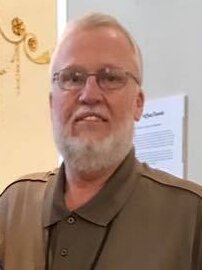Grain Inspection Topics - 70 Years Ago
/(Excerpted from the minutes of the annual conference of the National Association of Chief Grain Inspectors and the Grain Branch of the U.S. Department of Agriculture, May 4-5, 1950. Chicago, IL)
The Commodity Credit Corporation and the Grain Branch are working together to improve crops and keep stabilized prices. Production has increased 30 percent over the last 10 years and now lower planting allotments are in order because of large stocks on hand and the expectation of lower exports in the future. About 305 million bushels of corn were exported last year. Wheat and corn are to be bought on the farm and market, handled through the regular grain handling firms, and put in Federal storage or exported. Leroy Smith, director of USDA’s Grain Branch.
A major inspection problem is the frequency of heavy loaded rail cars – it is impossible to put a 5-foot straight probe to the bottom of a 6- or 7-foot rail car. Some cars are found to have poor quality grain at the bottom where it cannot be reached with the probe. George Butler, Cincinnati.
Intermarket discrepancies are a problem, cars tend to grade lower at destination. Federal offices should keep a closer check on the inter-markets. Edward Guinane, Sioux City
Many agencies provide pensions or retirement plans for their employees. Employees pay 5 percent of their salary for pensions. Maximum pensions are $150 per month based on an annual salary of $4,800. C.W. Shelly, Minneapolis.
Seedburo Equipment Company sponsored the evening social hour. The session the next morning opened with a demonstration of the new Federal Dockage Tester. Inspectors thought the tester looked good, is quiet, and gives a better cleaning operation on wheat. The price is $750 and orders should be placed soon. Federal offices are being equipped with them.
C.W. Shelly, chief inspector for the Minneapolis inspection Department of the State, was elected president of the Association. He reported that his agency employs about 355 people regularly and about 50 more in the busy season. There are 86 terminal elevators in the State. They have charge of warehousing, weighing and inspections. They have inspected 14 to 1,500 cars of grain on a big day. The overtime for employees cost about $225,000 per year. There are sampling stations outside of Minneapolis where the cars are sampled and the railroads deliver the samples to the main laboratory for analysis.
USDA’s Grain Branch reported there are 150 inspection points in the United States and 493 licensed inspectors. Over 2 million inspections were made last year. Eight percent of these were supervised, 19 percent of the inter-market shipments were supervised. Only 80,000 appeals were requested, which is about 4 percent of the total.
Report of the resolutions committee: to have further investigation of pensions, to work for better personnel, and to increase services and efficiency of inspection departments.





